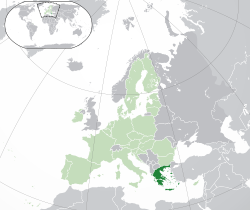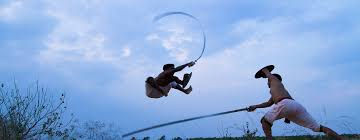European Martial Arts: Pankration
- Amir Hamza
- Aug 4, 2020
- 4 min read
Intro: So we have had our first look at South East Asian martial arts with Filipino Kinamotay. Now let's head over to Europe to look at one of the martial arts of the Ancient Greeks: Pankration essentially the MMA of ancient Europe.

Martial Art: Pankration
Style: Hybrid
Country: Greece
Origin: Ancient Greece
History: Pankration is believed to have originated in Ancient Greece during 7th century BC whereby it filled a niche in the Ancient Greek culture of combat. Initially the Greeks had two forms of unarmed combat, Pygmachi (striking aka Greek Boxing) and Pale (grappling aka Greek Wrestling). The two generally had rules that avoided using cross over technique between the two styles. Pankration on the other hand allowed the Pankratiasts to use techniques of both sports combined creating essentially the original concept of Mixed Martial Arts that we see in the modern day. Many fights were won by knock out, submission or even killing your opponent was considered a victory. Techniques ranging from punching, grabbing, kicking, takedown, joint locks and chokes were generally the focus of this style. It was believed at brutal technique such as knees to the head and eye gouging were permitted in extreme cases before the sport toned down the violence. Pankration was introduced to Olympia in 648 BC during the 33rd Olympic games though only adult men were allowed to train and in 200 BC became available for boys to partake. This style was part of the Ancient Olympic Games up until 393 AD when several Greek traditions were abolished by an edict from the Christian Emperor Theodosius I. The current state of Pankration is the Neo-Pankration revival movement by Greek American Martial Artist Jim Arvanitis in 1969 who is sometimes considered the pioneer of Mixed Martial Arts as a concept through his attempts to revive the Pankration Style.

Culture: The name of the style Pankration is believed to mean "All of Power" with Pan meaning All and Kratos referring to the Deity of Strength, Power and Might. Legend has it the Pankration style was invented by Mythological heroes such as Herakles and Theseus. With Herakles having used such style against the Nemean Lion during his 12 labours and Theseus doing the same to outwit the Minotaur of the Labyrinth in Hand to Hand combat. Traditionally Pankration did not have time limits or official weight classes. People were grouped by age either Men (Andres) or Boys (Paides). The Agones (Competitions) were held in sandpit arena called Skamma. Hellanodikis (referees) were usually armed with Raves (stout rods) to enforce rules and punish fighters if they broke the Nomos Enagonios (Rules of the Game). Gouging, biting and groin attacks was typically prohibited under Kakomachein (unfair fighting) though some sources state Sparta was the place of exception to such rules and where everything goes. Many of the contests are declared over when one of the fighters submit usually by raising their index finger. Around 200 BC, due to the encouragement of pankration among youths, Judges were added to the sport so they can also intervene if they believe the conditions to justify their decision and wish to avoid unnecessary deaths among their young. There was generally two variations of Pankration: these were And Pankration and Kato Pankration. Ano Pankration (meaning Upper Pankration) referred to technique and stances whilst standing up, whilst Kato Pankration (meaning Lower Pankration) referred to techniques whilst fighting on the ground similar to the differences in MM when standing up right like kickboxers or grounding and pounding like many grappling styles would encourage. As with traditional Olympics only men could participate and view. Women were forbidden but a female only olympics exists for female audience and participants only were the practice was done for the honour of the female deity Hera instead of Zeus. So female practitioners were often common (especially in Sparta) but segregated from Men and vice versa.

Warrior: Like many Ancient Greek sports, Pankration was traditionally practiced nude with oiled bodies, over time hand wraps and loincloths were added when the style was adopted by the ancient romans. The Modern day revival of Pankration generally encourages the typical MMA attire with shorts. Women most likely would wear a top or sport bra. Certain terms for techniques included Hyptiasmos (Pulling Guard), Klimakismo (Rear Naked Choke), Mesolabe (Waist Lock), Laktisma Eis Gastrizein (Straight Kick to Stomach), Embole (Takedown), Embasis (Mount) and Rassein (Throw). Pankration was taught within the family and by Paidotrivis (teachers) to students. Paraskeve (training) included numerous conditioning exercises and combat skills development such Asskiamachia (shadow-fighting), Akrocheirismos (sparring drills allowing either light or full contact), Andkorykomachia (bagwork). Internal energy was developed through breathing exercises known aspneuma (from the Greek word pneoor “breath”), the ideology behind this is comparable to Chakra in Indian arts or chi in the Chinese arts. Those who excelled at pankration were also believed to have been bestowed special attributes (areti) by the gods themselves.

Media/Potential: The ancient greeks have had many exposure and potrayals in pop culture. Whilst many attribute modern English Boxing and American Professional Wrestling as descendant arts to the Ancient Greeks Pygmachia and Pale respectively. Many people are unaware of the style of Pankration and there is very little reference to it in Pop culture by name. Outside of Jim Arvanitis reviving the style in a modern direction, many depiction of Ancient Greek warrior cultures such as Herakles in many media, Kratos in God of War or even certain fighting game characters vaguely reference the style. The best known in the fighting game industry would by Street Fighter's Urien and Gill who's entire motif and style is clearly centred on Ancient Greek culture. In fact Urien and Gill's fighting style is listed as Pankration in some sources and their loincloth attire are references to the art's past. Assassin's Creed Odyssey also has a segment within the game that allows the playable character to engage in a Pankration match, the art is even mentioned by name. Whilst Kassandra would not be allowed to practice Pankration against men in a public setting, women did have their own matches for women participants and viewers only. Historically the Olympics were gender segregated though Kassandra fighting men could be a slight inaccurate reference to a legend of a Greek Woman who disguised herself as a man to participate in the Men's tournament rather than the women's.



Comments